 Image search results - "tochigi" Image search results - "tochigi" |
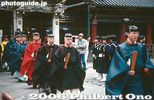
Also called "Sennin Gyoretsu" (1,000-person Procession 千人行列), this is Nikko's largest festival held on May 17-18. The highlight is a long procession of over 1,000 people dressed in various costumes.The three portable shrines are dedicated to the spirits of Tokugawa Ieyasu, Toyotomi Hideyoshi, and Minamoto Yoritomo. Photos start with May 17 at Toshogu Shrine, when priests gathered for a ceremony. 発興祭
|
|
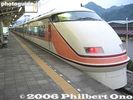
Tobu Line train to Nikko. It takes about 2 hours from Asakusa, Tokyo.
|
|
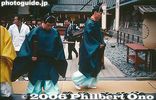
Prayer ceremony by priests
|
|

Inside Tobu Line train
|
|

Tobu Nikko Station 東武日光駅
|
|
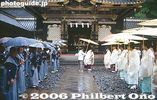
In front of the portable shrine storehouse for the three mikoshi. A ceremony is held to transfer the spirits from the main shrine to the portable shrines. 神輿舎にて宵成渡御This building is right next to the famous Yomei-mon Gate at the Toshogu Shrine.
神輿舎にて宵成渡御
|
|

Shinkyo Sacred Bridge, Nikko 神橋
|
|
|

Kids on school trip along Omotesando 表参道
|
|

The three portable shrines (mikoshi) are then carried out of the storehouse to be taken to Futarasan Shrine.
|
|
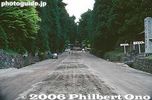
A National Treasure and World Heritage Site, Nikko's magnificent shrines and temples overshadow any other attractions Tochigi has. The Toshogu Shrine is especially famous and also serves as Tokugawa Ieyasu's mausoleum. Omotesando 表参道
|
|
|

Horse stable
|
|
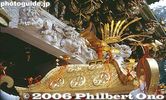
Passing under Yomeimon Gate.
|
|
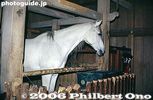
Horse stable
|
|
|
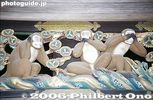
Hear, speak, and see no evilWood carving on the horse stable
|
|
|
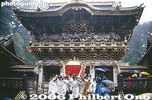
Coming down from Yomeimon Gate (National Treasure). 陽明門The gate is a National Treasure and symbol of Nikko.
陽明門
|
|

Five-story pagoda 五重塔
|
|
|
|

Oriental zodiac (hare) carving on five-story pagoda
|
|
|
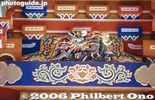
Oriental zodiac (dragon) carving on five-story pagoda
|
|
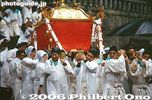
A short path leads to Futarasan Shrine.
|
|
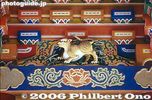
Oriental zodiac (tiger) carving on five-story pagoda
|
|

Niomon
|
|

Passing under the torii at Futarasan Shrine. 二荒山神社二荒山神社
|
|
|
|

Passing under the torii at Futarasan Shrine. 二荒山神社二荒山神社
|
|
|
|
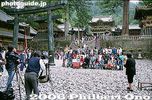
Group photo
|
|

Entering Futarasan Shrine's Haiden Hall. All three portable shrines are taken to this hall. 二荒山神社 拝殿
|
|
|
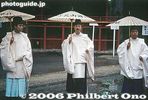
Priests on a rainy day.
|
|
|
|

The spirits of Tokugawa Ieyasu, Toyotomi Hideyoshi, and Minamoto Yoritomo in the three portable shrines are then transferred to Futarasan Shrine. The mikoshi spend the night here.
|
|

Dragon on ceiling that squeaks when you clap.
|
|
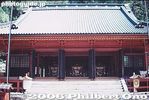
May 18: At 10:35 am, the spirits are transferred from Futarasan Shrine back to the portable shrines.Futarasan Shrine's Haiden Hall.
二荒山神社 拝殿
|
|

Portable shrine in Futarasan Shrine's Haiden Hall.二荒山神社 拝殿
|
|
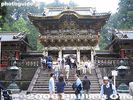
Yomeimon Gate, National Treasure 陽明門
|
|
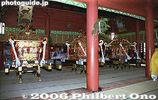
The three portable shrines (mikoshi) in Futarasan Shrine's Haiden Hall. 二荒山神社 拝殿
|
|
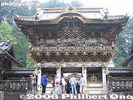
Yomeimon Gate, National Treasure, Nikko 陽明門
|
|

Mikoshi bearers standing by.
|
|

Rear of Yomeimon Gate
|
|

Mikoshi bearers standing by.
|
|
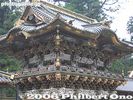
Rear of Yomeimon Gate
|
|

First group of mikoshi bearers fall in line.
|
|

Yomeimon Gate
|
|
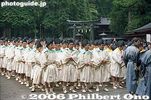
Second group of mikoshi bearers fall in line.
|
|

Yomeimon Gate
|
|
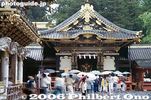
Portable shrine storehouse
|
|
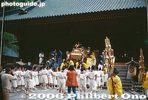
Carrying out the mikoshi from Futarasan Shrine.
|
|
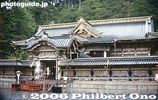
Karamon
|
|
|

Carrying out another mikoshi from Futarasan Shrine.
|
|

Karamon close-up
|
|
|

Sleeping cat
|
|
|
|

Sleeping cat 眠り猫
|
|
|
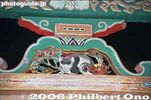
Sleeping cat 眠り猫
|
|

Carrying out another mikoshi from Futarasan Shrine.
|
|
|
|
|
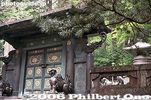
Tokugawa Ieyasu's mausoleum
|
|
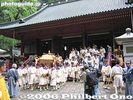
Carrying out another mikoshi from Futarasan Shrine.
|
|
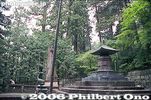
Tokugawa Ieyasu's mausoleum
|
|
|
|
|
|

Grounds of Futarasan Shrine, the starting point of the "1,000-Person Procession." 千人行列
|
|
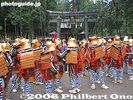
The warriors are the procession's main attraction.Waiting near Futarasan Shrine's torii.
|
|

Both men and boys wear the warrior costumes.
|
|
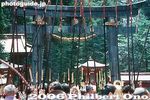
Futarasan Shrine's torii
|
|
|
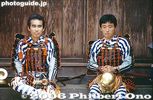
Cool heads.
|
|
|
|

Posing with maybe with their school teacher.
|
|
|
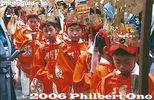
Chigo children 稚児, Nikko
|
|
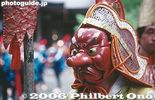
Over 50 different costumes are featured in the procession.
|
|
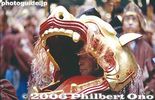
The procession's starting point at Futarasan Shrine is a great photo op.
|
|
|

The procession includes about 18 horses.
|
|

Shrine priests sitting
|
|

Shrine priests standing
|
|
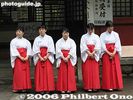
Shrine maidens 巫女
|
|
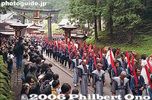
At 11:00 am, the procession starts. They leave Futarasan Shrine through this torii. 上新道上新道
|
|
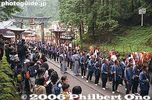
This short path goes to the Omotesando main promenade.上新道
|
|
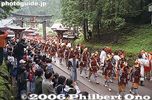
Warriors make their way through.
|
|
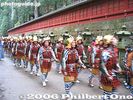
This warrior procession is said to be a reenactment of Shogun Tokugawa Hidetada's visit to Toshogu Shrine, dedicated to Tokugawa Ieyasu. Successive shoguns visited the shrine as well.上新道
|
|

Rear view
|
|
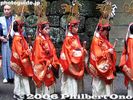
Chigo children wearing an elaborate crown with the signs of the eto Oriental Zodiac. NikkoNikko Grand Spring Festival in May.
|
|
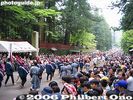
Omotesando main promenade 表参道
|
|
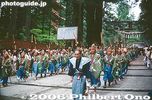
Start of the Omotesando with Ichino-torii in the background. 一ノ鳥居
|
|
|
|
|

Beware of horse droppings
|
|
|

Sacred music musicians
|
|
|
|
|

Mikoshi passing through Ichino-torii
|
|

Mikoshi
|
|
|
|
|

The Boy Scouts collect offerings (excluding horse droppings) thrown on the ground by spectators.
|
|
|
|
|
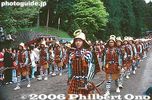
Warriors coming down the Omotesando. 武者行列
|
|

Warriors coming down the Omotesando. 武者行列
|
|

Face of a samurai.
|
|

Banners leading the procession.
|
|
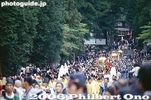
Omotesando is the main part of the route to watch the procession. It is the shrine's largest avenue.
|
|
|
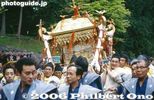
Mikoshi coming through.
|
|
|
|
|
|
|
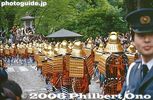
This is near the end of the Omortesando and they turn left to go to the Otabisho resting place.
|
|

12 noon: Otabisho resting place. They arrive and have lunch. The three mikoshi are stored in the building on the upper left. 御旅所御旅所
|
|
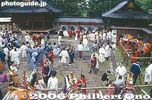
Otabisho 御旅所
|
|

Mikoshi stored in the Otabisho's Shinden Hall, a resting place for spirits in transit. 御旅所 御神殿
|
|

Procession banners
|
|
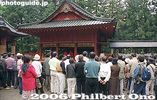
Ceremony at the Otabisho. 御旅所祭
|
|
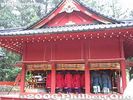
Ceremony at the Otabisho. 御旅所祭 拝殿
|
|
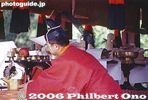
Ceremony to give offerings to the shrine deity. 三本立七五膳Sanbon-date Shichi-jugo zen
三本立七五膳
|
|

Ceremony to give offerings to the shrine deity. 三本立七五膳Sanbon-date Shichi-jugo zen
三本立七五膳
|
|
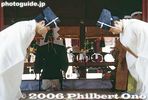
Sanbon-date Shichi-jugo zen
三本立七五膳
|
|
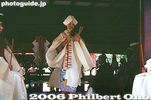
Ya-otome no Mai Sacred Dance 八乙女の舞
|
|

Offerings of sea bream (tai)Sanbon-date Shichi-jugo zen
三本立七五膳
|
|
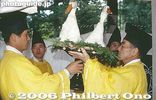
Offering of ducks (dead)
|
|
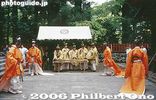
Azuma-asobi no Mai Dance 東遊の舞
|
|

What happened to the white roof for the musicians? Azuma-asobi no Mai Dance 東遊の舞These pictures were taken in different years and combined.
|
|

Azuma-asobi no Mai Dance 東遊の舞
|
|
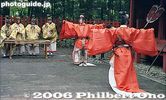
Azuma-asobi no Mai Dance 東遊の舞
|
|
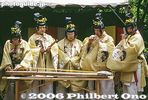
Azuma-asobi no Mai Dance musicians
|
|

These two performed the Yaotome-no-Mai. They are leaving the building.
|
|
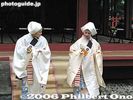
Dancers leaving the building
|
|
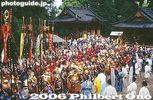
Near departure time at Otabisho
|
|
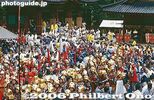
People get ready to leave and go back to Toshogu Shrine.
|
|
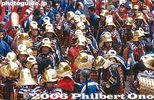
Warriors with shiny gold helmets.
|
|
|
|
|
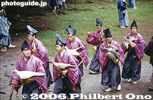
Wooden birds
|
|

1:00 pm: Departure at Otabisho
|
|
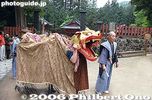
Lion
|
|
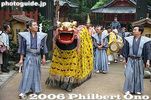
Another lion (shi-shi)
|
|
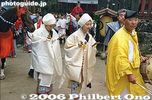
Dance maidens
|
|
|
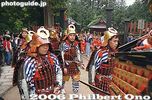
Warriors leaving the Otabisho.
|
|
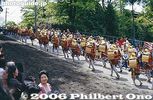
Warriors walk back up the slope in front of the Otabisho.
|
|
|

Mikoshi is carried out of the Otabisho.
|
|

Mikoshi is carried out of the Otabisho.
|
|

The three mikoshi are carried out of the Otabisho.
|
|
|
|

Leaving the Otabisho.
|
|
|
|
|
|

Shrine priest
|
|

Heading to Omotesando. They follow the same route back.
|
|

Chigo children, notice the Oriental zodiac animals on their crowns.
|
|
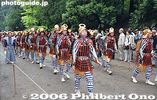
Warriors on Omotesando
|
|
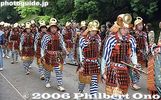
Warriors on Omotesando
|
|
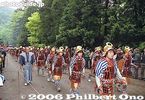
Warriors on Omotesando
|
|
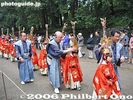
Chigo children and assistants make sure the crown doesn't fall off.
|
|
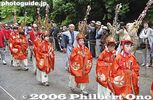
Those crowns are heavy.
|
|
|

Warriors and Five-story Pagoda
|
|

Mikoshi enter the Ichino-torii
|
|

Mikoshi and Five-story Pagoda
|
|
|

Mikoshi and Five-story Pagoda
|
|
|

Warriors going through the Omote-mon Gate.
|
|
|
|
|
|

Mikoshi coming through Ichino-torii
|
|
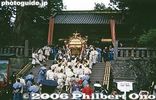
Mikoshi going up to Omote-mon Gate
|
|

Another mikoshi going up to Omote-mon Gate
|
|
|
|
|
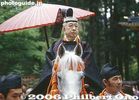
Shrine priest
|
|

Ichino-torii
|
|

1:30 pm: The end (path to Futarasan Shrine). A similar festival is held in Oct., but on a smaller scale and with only one mikoshi.After the festival ends, there's enough time to see the shrine.
|
|

Ashikaga Flower Park is home to one of Japan's largest wisteria trellis and numerous wisteria trees/vines. Besides purple wisteria, it also boasts white and yellow wisteria. Entrance to the park..
|
|
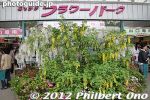
Entrance to Ashikaga Flower Park is guarded by these yellow wisteria. Admission is a pricey ¥2,000 during the wisteria season from late April to early May. It's worth it during peak bloom.
|
|
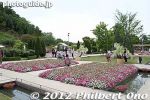
If you're visiting during the wisteria's peak bloom, I highly recommend seeing this park. Breathtaking. Flower beds near the entrance.
|
|
|
|
|
|
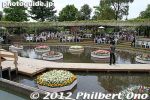
Flower Stage
|
|
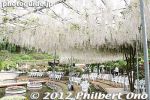
A semi-ring of chairs in front of the Flower Stage. The ceiling has light pink wisteria. うす紅の棚
|
|

Map of Ashikaga Flower Park. It's large, but compact enough to walk around and see everything. They also light up the flowers at night until 9 pm.
|
|
|
|
|
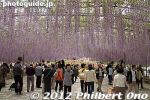
The main and spectacular attraction is this Giant Wisteria (大藤) on a expansive trellis.
|
|

Giant Wisteria at Ashikaga Flower Park in Ashikaga, Tochigi. The trellis is huge and the wisteria strands are long. Super awesome.
|
|

This wisteria tree is about 140 years old. It was transplanted here in Feb. 1996.
|
|
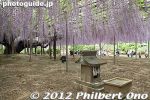
A small shrine under the Giant Wisteria.
|
|
|
|
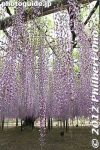
The wisteria strands can be as long as 1.8 meters.
|
|
|
|
|

The Giant Wisteria extends over 36 meters by 33 meters. About the same as a large hotel ballroom or a whopping 600 tatami mats. The trellis was only 50 tatami mats when it was transplanted here.
|
|
|
|
|
|
|
|
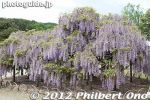
Many wisteria trees decorate the park paths.
|
|
|
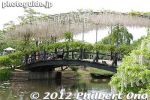
Usubeni Bridge (Light Pink Bridge) with a canopy of light pink wisteria. うす紅橋
|
|
|
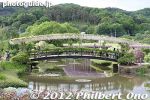
Usubeni Bridge (Light Pink Bridge) with a canopy of light pink wisteria. うす紅橋
|
|
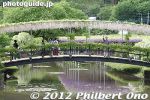
Usubeni Bridge (Light Pink Bridge) with a canopy of light pink wisteria at Ashikaga Flower Park in Ashikaga, Tochigi. うす紅橋
|
|
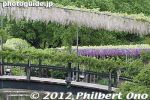
Usubeni Bridge (Light Pink Bridge) with a canopy of light pink wisteria. うす紅橋
|
|
|
|
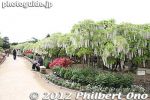
Tunnel of White Wisteria.
|
|
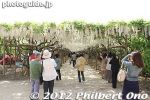
Tunnel of White Wisteria.
|
|
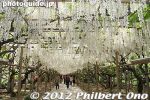
Tunnel of White Wisteria goes for 76.5 meters.
|
|
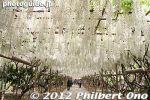
Tunnel of White Wisteria is one of a kind in the world at Ashikaga Flower Park.
|
|

About the Tunnel of White Wisteria.
|
|
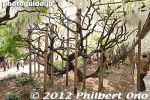
The Tunnel of White Wisteria has wisteria trees planted on both sides.
|
|
|
|
|
|
|
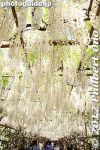
White wisteria in the Tunnel of White Wisteria.
|
|
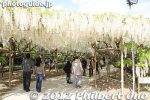
Exit/entrance of Tunnel of White Wisteria.
|
|
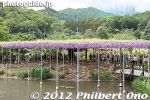
Yae-fuji wisteria trellis.
|
|

Yae-fuji wisteria trellis. Yae-fuji features more flower petals, making the flower look more like little balls. 八重藤
|
|
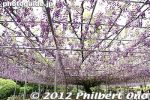
Yae-fuji wisteria trellis. Yae-fuji features more flower petals, making the flower look more like little balls. 八重藤
|
|
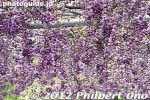
Yae-fuji wisteria features more flower petals, making the flower look more like little balls. 八重藤
|
|
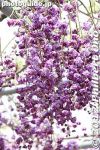
Yae-fuji wisteria features more flower petals, making the flower look more like little balls. 八重藤
|
|
|
|
|
|
|
|
|